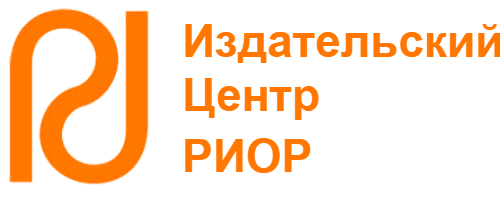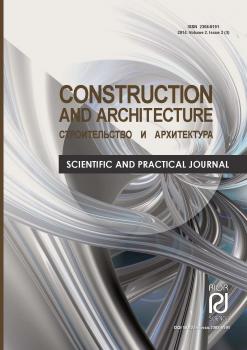Moscow, Russian Federation
Moscow, Moscow, Russian Federation
Currently, the digitalization of construction projects is becoming a reality. The energy model of a build-ing (BEM) is being introduced into the design practice, which does not allow directly solving the prob-lems of designing engineering systems of a building. There is a gap in approaches to building a digital building information model. On the one hand, there is the maximum use of information from the digital model during design calculations. On the other hand, there is a simplification of mathematical models for solving problems related to the design of engineering systems. Many important tasks of design and op-eration of engineering systems are not solved in conjunction with the premises of the building. It is pro-posed to use the representation of the building as a graph, which will allow you to solve the problems of design and operation of engineering systems correctly. Most of the necessary information is already pre-sent in the building information model and can be extracted from it automatically. As an example of con-verting information from a digital model, the problem of determining the heat loss of premises was cho-sen. This task is a mandatory part of any project. Existing software products do not allow you to automat-ically determine the dimensions of the enclosing structures of the room that are necessary for solving the problem, and do not take into account the relative location of the premises. These reasons determine the need to develop the application. Materials and methods: To solve the problems of design and operation of engineering systems of a building, it is proposed to use a topological model of a building, which is a connected graph, the compo-nents of which are a base subgraph describing the connections between the premises of the building and subgraphs of engineering systems. The data structure and algorithm for forming a basic building sub-graph based on a digital building model are presented Results: The software application that implements the proposed algorithm was tested on the calculation of heat loss in the premises of a building. A 3D model of a 10-storey residential building was used as the object of the experiment. As a result of the experiment, a reduction in the time required for the prepara-tion of the initial information and for the calculation was revealed from 8 hours to 20 minutes.. Conclusions: Taking into account the relative location of building premises and life support systems in the topological model of the building allows solving problems of environmental and fire safety, optimiz-ing design solutions for supply, exhaust, smoke ventilation systems and other tasks. The developed soft-ware module designed for calculating the heat loss of premises is the first step in the development of software products that use a digital model of a building as the initial information for building a topologi-cal model.
building information model, engineering systems, graph, algorithm, heat loss of premises
1. Karakozova I.V., Malyha G.G., Pavlov A.S., Panin A.S., Tesler N.D. Issledovanie podgotovitel'nyh rabot dlya ispol'zovaniya BIM-tehnologiy na primere proektirovaniya medicinskih organizaciy // Vestnik MGSU. 2020. T. 15. Vyp. 1. S. 100-111. DOI:https://doi.org/10.22227/1997-0935.2020.1.100-111
2. Abakumov R. G., Naumov A.E., Zobova A. G. Preimuschestva, instrumenty i effektivnost' vnedreniya tehnologiy informacionnogo modelirovaniya v stroitel'stve // Vestnik BGTU im. V.G. Shuhova. 2017. T. 5. S. 171-181. DOI:https://doi.org/10.12737/article_590878fb8be5f0.72456616
3. Ponkin I.V., Kupriyanovskiy V.P., Red'kina A.I., Semenova E.M., Ponkin D.I., O.V. Grin'ko O.V. K voprosu o soderzha-nii ponyatiya i osobennostyah ontologii energeticheskogo interneta i ego pravovogo i tehnologicheskogo obrazov // International Journal of Open Information Technologies. 2019. T. 8. Vyp. 7. S. 87-93
4. Klimov A.A., Kupriyanovskiy V.P., Grin'ko O.V., Pokusaev O.N.K voprosu obratnogo inzhiniringa - put' ot bumagi do cifrovyh ontologicheskih pravil dlya obrazovatel'nyh tehnologiy //International Journal of Open Information Technologies. 2019. T. 9. Vyp. 7. S. 82-91.
5. Volokitin Yu.I., Kupriyanovskiy V.P., Grin'ko O.V., Pokusaev O.N., Sinyagov S.A. Problemy cifrovoy ekonomiki i formalizovannye ontologii // International Journal of Open Information Technologies. 2018. T. 6. Vyp. 6. S. 87-96.
6. Mar'yasin O.Yu. Razrabotka ontologiy dlya cifrovogo dvoynika zdaniya // Ontologiya proektirovaniya. 2019. T.9, T. 4. Vyp. 34. S.480-495. - DOIhttps://doi.org/10.18287/2223-9537-2019-9-4-480-495.
7. Kovalev S.P., Proektirovanie informacionnogo obespecheniya cifrovyh dvoynikov energeticheskih sistem // Sistemy i sredstva informatiki, 2020. T. 30. Vyp. 1 S. 66-81
8. Selyutina L.G. Sistemnyy podhod k resheniyu zadach v sfere proektirovaniya i upravleniya stroitel'stvom // KANT . 2015. T. 2. Vyp. 15. S. 71-72.
9. Mar'yasin O.Yu., Ogarkov A.A. Imitacionnoe modelirovanie i optimizacii elektropotrebleniya ofisnogo zdaniya // IMMOD-2017, 18-20 oktyabrya, Sankt-Peterburg. S. 480-484.
10. Kolodkina A.S, Mar'yasin O.Yu., Ogarkov A.A, Optimal'noe upravlenie energopotrebleniem i mikroklimatom bol'shih mnogozonnyh zdaniy // Upravlenie bol'shimi sistemami: Sbornik trudov. Vyp. 75. 2018. S. 146-169
11. Mar'yasin O.Yu., Kolodkina A.S., Ogarkov A.A. Komp'yuternoe modelirovanie «Intellektual'nogo zdaniya» // Modelirovanie i analiz informacionnyh sistem. 2016. T. 23. Vyp. 4. S. 427-439.
12. Danilin A.N., Komyak V.V., Kyazimov K.T. Matematicheskie modeli optimizacii vybora tehnicheskih sredstv i ih mesto-polozheniy dlya evakuacii iz vysotnyh zdaniy // Vestnik HNTU. 2015. T. 3. Vyp. 54. S. 565-569
13. Sobol' A.N., Pankratov A.V., Komyak V.V. Podhod k resheniyu zadachi 2D upakovki s trassirovkoy na primere postroeniya optimal'nogo plana evakuacii // Stroitel'stvo i tehnogennaya bezopasnost'. 2013. T. 48. S. 181-186
14. Timoshenko E. A., Savickiy N. V Analiz i harakteristika osnovnyh faktorov, vliyayuschih na ekologicheskuyu bezopasnost' pomescheniy zhilyh zdaniy // Vіsnik PDABA. 2015. T. 1. Vyp. 202. S. 18-26.
15. Smirnov E. B., Dacyuk T. A., Taurit V. R. Ocenka ekologicheskoy bezopasnosti proektiruemyh zdaniy // Voda i ekologiya: problemy i resheniya. 2017. T. 3. S. 82-89. DOIhttps://doi.org/10.23968/2305-3488.2017.21.3.83-99
16. Ignatova E.V., Ignatov V.P. Analiz napravleniy issledovaniy, osnovannyh na koncepcii informacionnogo modelirovaniya stroitel'nyh ob'ektov // Vestnik MGSU. 2011. T. 1. S. 325-330
17. Rod Stivens Algoritmy. Teoriya i prakticheskoe primenenie. 2019. - Moskva: Eksmo. 543 s.
18. Lafore R. Struktury dannyh i algoritmy v Java. Klassika Computers Science. 2-e izd. 2013. SPb.: Piter, 2013.
19. Ivanovskiy S.A., Simonchik S.K. Algoritmy vychislitel'noy geometrii. Peresechenie otrezkov: metod zametaniya ploskosti // Komp'yuternye instrumenty i obrazovanie. 2007. T. 4 S.18-33
20. Malyavina E. G. Teplopoteri zdaniya: spravochnoe posobie. 2007. M.: AVOK-PRESS.
21. Varapaev V.N., Kitayceva E.H. Matematicheskoe modelirovanie zadach vnutrenney aerodinamiki i teploobmena zdaniy. 2008 - M. : Izd-vo SGA. 337 s:



















